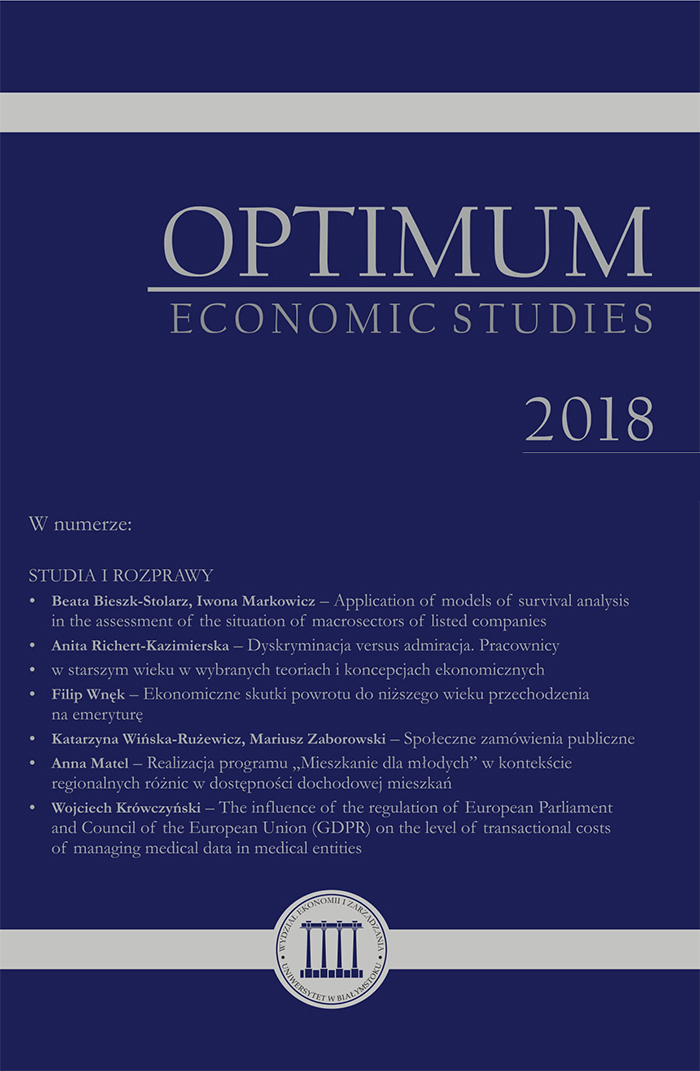Comprehensive analysis of the process of population ageing in Poland in the years 1950–2016
Comprehensive analysis of the process of population ageing in Poland in the years 1950–2016
Author(s): Ewa RoszkowskaSubject(s): Socio-Economic Research
Published by: Wydawnictwo Uniwersytetu w Białymstoku
Keywords: population ageing ; biological age groups ; age factor ; median age
Summary/Abstract: Aim – The main aim of the study is to determine the dynamics of the ageing process ofthe Polish population and to present a forecast of population ageing based on comprehensiveanalysis of the age structure of this population. The separated components of this structure arebiological age groups: 0–14, 15–64, 65 years and more. The time period of the research comprisesthe years 1950–2016, while the population forecast by age is presented for 2020 and 2050. Theelaboration includes data from GUS.Research methodology – In assessing the level of the ageing of Polish society there were used,among others, the old age index, old age coefficient, a measure of the similarity of structures,a measure of the structural change intensity, and the median age.Score – In the years 1950–2016 in Poland there were observed changes in the age structure ofthe population in age groups: 0–14 years old, 15–64 years old, 65 years old and more, includinga steady trend in the percentage of people in the age group 0–14 years old and a steadyupward trend in the percentage of people aged 65 and over, a strong upward trend in theold age index, and a strong tendency of increase in the post-working age dependency ratio.The Central Statistical Office’s (GUS) forecasts indicate that the population ageing measured bychanges in the age structure of the population and the shifting of the median age which aretaking place in Poland in a dynamic manner, will continue with increased intensity over thenext decades.Originality/value – The added value of the work is the use of the similarity of structuresand the intensity of structure changes, which together with an approach based on classicalindicators allowed for a comprehensive analysis of the age structure of the Polish population indynamic terms, determining the quantitative nature of changes in the age structure over time,the direction of these changes and their intensity. It was also pointed out that in light of theongoing demographic transformations, the concept of silver economy understood as an economicsystem aimed at using the potential of the elderly and taking into account their needs isbecoming a priority.
Journal: Optimum. Economic Studies
- Issue Year: 92/2018
- Issue No: 2
- Page Range: 206-226
- Page Count: 21
- Language: English

